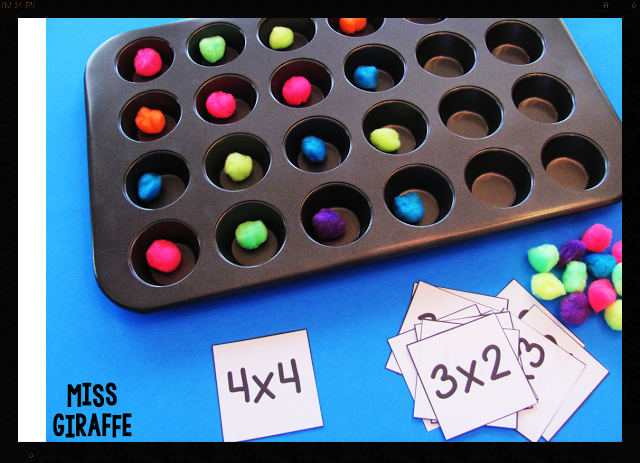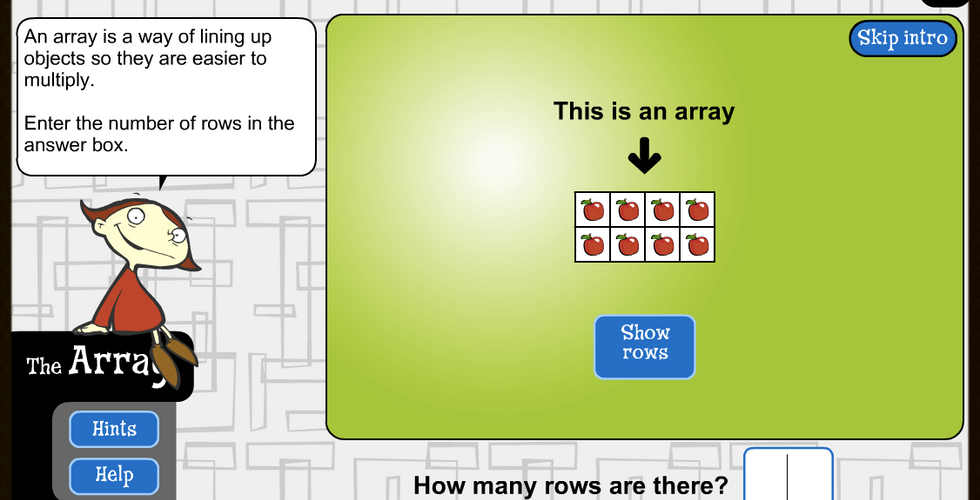WEEK THREE: Multiplication
- Cassie-Jaye Simmons
- Mar 15, 2016
- 4 min read
Multiplication Concept
The Array Model:
(Miss Giraffes Class. (2015). How to teach arrays [Photograph]. Retrieved fromhttp://missgiraffesclass.blogspot.com.au/2015/07/how-to-teach-arrays.html)
The Measurement or Length Model:

(Week Three Lecture)
The Set Model:

(Fun Games For Learning. (2014). Multiplication dice game [Photograph]. Retrieved at http://fungames4learning.blogspot.com.au/2014/10/multiplication-fun.html)
The Combination Model:

(Week Three Lecture)
Mutiplication Skill

Multiplication Strategies

- Anchor charts in the classroom help students visualise strategies. When students encounter difficulties, teachers can talk them through the strategies and help them identify which would suit their problem.
(My Classroom Ideas. (n.d.). Multiplication anchor chart [Photograph]. Retrieved from http://myclassroomideas.com/ multiplication-strategies-anchor-chart/)
Language of Multiplication:

Why is the Language model represented by an inverted Triangle? - A clear visual which highlights the weighting of the three components - In looking at the model, an educator can see the “broad top” of the triangle, the ‘concret/visual’ and ‘verbal’ elements which become the catalyst for forming symbolic languages. - With students mastering teachings in the ‘verbal/concrete' and ‘verbal' elements , educators can move down to the symbolic language all whilst interconnecting all three elements for ease of student learning.
(Jamieson-Proctor & Larkin, n.d.)
TED Talk: Maths isn't Hard, it's a Language
(TEDx Talks, 2014)
Additional Resources and Teaching Strategies:

- I think this is a great activity to do with children as it introduces them to the different forms that multiplication can take, and also the different strategies they can use, as follows;
- Set model
- Array Model
- Repeated addition
- Doubles
- Counting by 3
- Number Line
Teachers pre-fill one row, and have the students use this to fill in the remaining rows. Different rows can be pre filled, depending on which concept/skill is being introduced that week.
(Short and Sassy Teacher. (2013). Multiplication book [Photograph]. Retrieved from http://shortandsassyteacher.blogspot.com.au/2013/11/five-for-fridaykind-of.html)

- A great activity that helps children visualise multiplication as the repeted addition of two equal 'sets'
(Heerens Happenings (2012). Multiplication hands [Photograph]. Retrieved from http://heerenshappenings2.blogspot.com.au/2012/04/multiplication.html)
Misconception: That memorising timetable facts are an effective strategy for learning multiplication. But, without students grasping the concepts (that 3 x 4 is the same as 4 x 3 etc), timetables memorisation is creating ROTE learning experiences, not authentic ones.
"Boaler’s (2015) explains that the key to success in math is having something called “number sense,” and number sense is developed through “rich” mathematical problems. Too much emphasis on rote memorization, she says, inhibits students’ abilities to think about numbers creatively, to build them up and break them down. She cites her own 2009 study, which found that low achieving students tended to memorize methods and were unable to interact with numbers flexibly."
How to change misconceptions: A great way of teaching timetables in using they array model. This really shows the idea that a multiplication has a turnaround, meaning it has the same answer. This helps children understand that 3 x 4 is the same as 4 x 3. You could give children a graph and tokens, and have them create varying arrays, and have them write the sums they have made on their graph (including the turnaround).
Unit Learning Resource to help remediate misconceptions:

(Retrieved from Week 3: Learning Activities)
How has my understanding of multiplication changed?
In primary school, my strongest mathematical memory is learning the times table chart. As a class we used to chant them every morning, yet no time was invested in letting us explore the concept with concrete/visual aids. It was very much a rote learning experience, where students memorised the facts, so they could be recalled when needed. Although being able to recall times table facts serves me well in adulthood, the non-formation of concepts as a child meant although I understood 4 x 5 (for example), I did not have the number sense to establish that 5 x 4 also had the same answer. For this reason, I will always have my students explore the times tables by using array models (as we did in tutorials), so they can understand the inverse operation, thus expanding their knowledge through inquiry-based learning, not rote learning.
ACARA Links to Multiplication in Year 2
http://www.australiancurriculum.edu.au/mathematics/curriculum/f-10?y=2&s=NA&layout=1

(Australian Curriculum, n.d.)
Scootle Resources:
The array game:
- The below resource is an interactive digital game that has students fill in empty boxes that ask; How many rows and how many columns? The rectangle is then rotated, and children are asked to answer the same questions. The students can then visualise the concept of array multiplication. This is a great hands on, very visual representation of array models.
(http://www.scootle.edu.au/ec/viewing/L106/index.html)
_________________________
Multiply two number to get twenty!
- The below is a video resource that sings a song about fact families - It sings that 5 x4 and 4 x 5 = 20 and 20 / 4 = 5 and 20 / 5 = 4
(http://splash.abc.net.au/home#!/media/2006815/))
Idea Summaries from Textbook:
Chapter 9: Operations meanings and basic facts - multiplication

Chapter 11: Solving mathematical problems with standard and alternative written strategies - multiplication
- Children must have a firm concept of place value, expanded notation, distributive property and basic facts of multiplication.
- Multiplication with 1 and 2 digit multipliers
- Partial - product multiplication algorithm
- Lattice multiplication
- Multiplication by 10, multiples of 10, multiplication with zeros
(Reys, Lindquist, Lambdin, Smith, Rogers, Falle, Frid & Bennett, 2012)














Comentarios